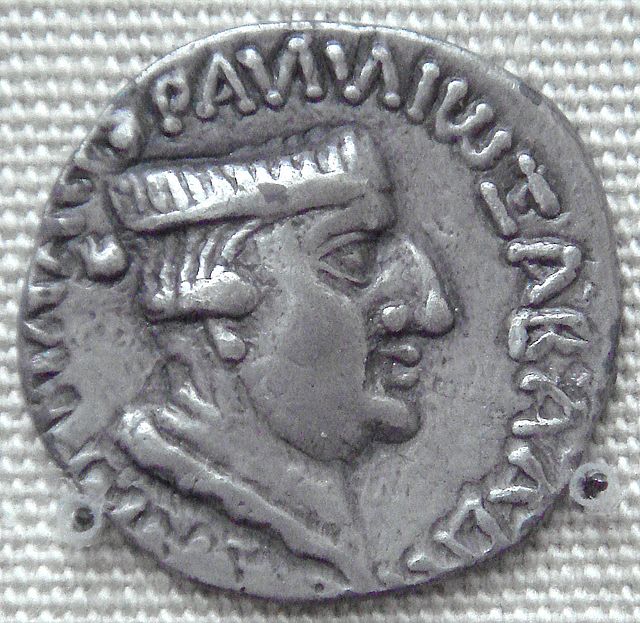Periplus of the Erythraean Sea
The Periplus of the Erythraean Sea, also known by its Latin name as the Periplus Maris Erythraei, is a Greco-Roman periplus written in Koine Greek that describes navigation and trading opportunities from Roman Egyptian ports like Berenice Troglodytica along the coast of the Red Sea and others along the Horn of Africa, the Persian Gulf, Arabian Sea and the Indian Ocean, including the modern-day Sindh region of Pakistan and southwestern regions of India.
Coin of the Himyarite Kingdom, southern coast of the Arabian Peninsula, in which ships stopped when passing between Egypt and India. This is an imitation of a coin of Augustus, 1st century
Coins of king Endybis, AD 227–235. British Museum. The left one reads in Greek "ΑΞΩΜΙΤΩ ΒΑϹΙΛΕΥϹ", "King of Axum". The right one reads in Greek: "ΕΝΔΥΒΙϹ ΒΑϹΙΛΕΥϹ", "King Endybis".
Coin of Nahapana (AD 119–124). Obv: Bust of king Nahapana with a legend in Greek script "ΡΑΝΝΙΩ ΞΑΗΑΡΑΤΑϹ ΝΑΗΑΠΑΝΑϹ", transliteration of the Prakrit Raño Kshaharatasa Nahapanasa: "King Kshaharata Nahapana".
The Periplus explains that coins of the Indo-Greek king Menander I were current in Barigaza.
A periplus, or periplous, is a manuscript document that lists the ports and coastal landmarks, in order and with approximate intervening distances, that the captain of a vessel could expect to find along a shore. In that sense, the periplus was a type of log and served the same purpose as the later Roman itinerarium of road stops. However, the Greek navigators added various notes, which, if they were professional geographers, as many were, became part of their own additions to Greek geography.
Beginning of the Periplous tou Euxeinou Pontou by Arrian of Nicomedia, Johann Froben and Nicolaus Episcopius, Basel 1533





